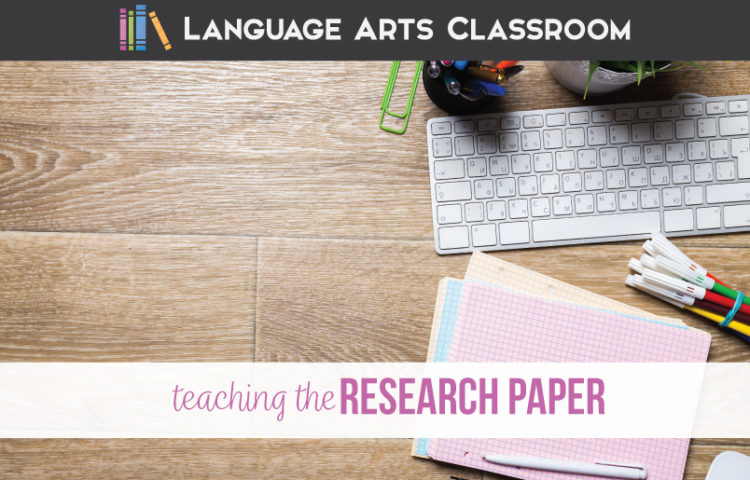
- Should schools enforce student uniforms?
- Is it okay to give important messages via texting?
- Should Facebook be censored?
- Should high school be five years instead of four?
- Should schools move to a year-round schedule?
Mastering appropriate writing skills marks a critical learning period for high school students. With a creative approach, teaching students how to write persuasive, creative, research and descriptive writing can be a breeze.
Students will respond to different types of writing exercises. Utilize a variety of options to appeal to different learning styles.
If you are having a difficult time teaching essay writing skills to your students, you're not alone. These unique activities can help get students started crafting well-written essays that include cohesive supporting arguments:
How to Teach Persuasive Essays

Step 2. Your students then come up with a yes or no answer and a statement to support their response. For example, your student could write: "Yes, schools should have a uniform policy because it would help the student body avoid cliques."
By high school, you really shouldn't have to teach the basic concept of creative writing, but instead should be able to focus on helping hone students' skills for things like word choice, organization, and other advanced writing concepts.
Persuasive essays focus on a specific argument and use evidence to back up your point of view. Students may need some help establishing a solid argument in the beginning, but will progress with practice.

- Should schools enforce student uniforms?
- Is it okay to give important messages via texting?
- Should Facebook be censored?
- Should high school be five years instead of four?
- Should schools move to a year-round schedule?
Mastering appropriate writing skills marks a critical learning period for high school students. With a creative approach, teaching students how to write persuasive, creative, research and descriptive writing can be a breeze.
Students will respond to different types of writing exercises. Utilize a variety of options to appeal to different learning styles.
If you are having a difficult time teaching essay writing skills to your students, you're not alone. These unique activities can help get students started crafting well-written essays that include cohesive supporting arguments:
How to Teach Persuasive Essays

Step 2. Your students then come up with a yes or no answer and a statement to support their response. For example, your student could write: "Yes, schools should have a uniform policy because it would help the student body avoid cliques."
By high school, you really shouldn't have to teach the basic concept of creative writing, but instead should be able to focus on helping hone students' skills for things like word choice, organization, and other advanced writing concepts.
Persuasive essays focus on a specific argument and use evidence to back up your point of view. Students may need some help establishing a solid argument in the beginning, but will progress with practice.

So we did a google search on “how to write an SAT [or ACT] essay.” There are a gazillion articles out there that are very helpful with concrete, specific tips for how to conquer the beast. To practice with these tips, I had my kids take a sample SAT prompt and write an essay with a 25-minute timer at least twice a week during the last part of the semester that they took the Bravewriter course mentioned above.
UPDATE: After writing this article, I discovered an amazing thing called a RUBRIC. More on that in a minute.
WriteShop is a homeschool high school writing option that is VERY user-friendly. It helps your teen work on the writing process step-by-step, and it also provides a LOT of support for whoever is doing the grading (that’s you, mom!).
Over the years, however, we’ve come across a few gems of curriculum that have helped with this dilemma, and I’d like to share them with you today.
WriteShop
Let me first just say that since all of our homeschool graduates who have gone to college so far did successfully complete college freshman writing courses — despite my limitations — I have come to the conclusion that (no shocker here, if you know me at all) high school writing doesn’t have to be that hard.
WriteShop also provides UMPTEEN other resources to help both mom and kid feel confident about the writing instruction that is happening in your homeschool.
UPDATE: We have since learned even more about how to write the type of essay the ACT/SAT scorers are looking for. Read The Five-Paragraph Essay: What, Why, and How for Homeschoolers for more information.
Also check out these recommendations and tips from other bloggers:

Lawyers, political organizers, advertisers, real estate agents: most jobs require ethical research and then a written report. As a citizen, I research concepts important to my community and family.
All parts of an ELA classroom fit together like puzzle pieces, and when teaching research papers, that neatly assembled puzzle sits on display. By giving students clear expectations, you are ready to guide them through ethical research and through strengthening their writing. Teaching the research paper is a large task, so you should know what you want to accomplish.
I start every writing unit with clear expectations, terminology, and goals. I cover a presentation with students, and then I upload it to Google Classroom. Students know to consult that presentation for clarity. Initially, covering the basics may seem wasteful, but it saves all of us time because students know my expectations.
Sentence structure is also part of teaching students how to write a research paper because the information must be factual. Sometimes students report information incorrectly, and sometimes, their sentence structure is to blame. Focus on a return to simple syntax for ethical research, and then work on sentence diversity if possible.
Provide clear expectations.

Before you begin teaching students how to research, outline what strong research looks like. You might consider these questions:
Hopefully, students write with passion. Hopefully, they want to show or prove their statements. Teaching students how to write a research paper is easier when students enjoy their topics
A feeling I always hated as a student was the unknown. Sure, part of the learning process is not knowing everything and making mistakes. I, as the teacher, don’t want to be the source of frustration though. I never want students to wander down a path that won’t advance them toward our end goal: a well-researched paper. Part of teaching research skills to high school students is providing clear expectations.
If teachers choose to create assignments specifically geared toward easing students’ transition to college, they should consider giving students an open-ended prompt or allowing them to choose their own topic entirely.
In contrast, a survey done by The Chronicle of Higher Education found that “61% of high school teachers said their students have never written a paper that was more than five pages.” This means that 61% of high school teachers had never assigned a single paper to their students by college standards.
The influx of students with low verbal skills leads to confused and frustrated college writing instructors. An opinion piece by Dr. John Warner, a Creative Writing professor, bemoans the fact that high school students are told there are dozens of terms that they are “100% not allowed to use,” leading them to approach writing as “a kind of con or confidence game, where the goal is to make the audience believe that the writer is ‘smart,’ (via proxies like a large vocabulary), as opposed to clearly communicating an idea that meets the audience’s needs.”
“Although it seems that writing could be a simple representation of danger in Doctor Faustus, its significance evolves and increases over the course of the play
How to Prepare High School Students for College Writing

Some experts suggest that the estimates should probably be even higher, pointing out that “this data may not capture adults returning to school or part-time students.” In some schools, such as Baltimore City Community College, “it’s uncommon for an incoming student not to be placed in remedial education.”
In fact, she explains, “from the elementary level, through high school, it is vital that teachers think of the work they are doing as already transitioning students for college-level writing and, subsequently, the writing their students will do in their professional lives.”
Although there have been encouraging reports suggesting that the highest achieving American students are continuing to perform at higher and higher levels, the lowest achieving students aren’t improving and, in fact, are scoring lower than ever.
Many of these journals require paid subscriptions to access, but students typically receive free access through the university library

